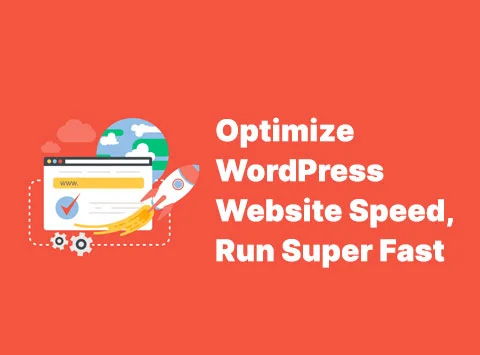In the fast-paced digital realm, optimizing your WordPress website is key for speed and SEO. This guide outlines steps for hosting, theme, and content optimization, ensuring your site is both swift and search engine-friendly. From server considerations to crafting SEO- blog content, we’ll navigate the steps to elevate your WordPress presence. Let’s dive into the essentials for a faster, more discoverable digital experience.
Steps to Optimize WordPress Website:
- Backup WordPress Website Data:
Before making any changes, it’s crucial to create a backup of your WordPress website. This ensures that you can restore your site to its previous state if anything goes wrong during the optimization process. - Check Website Speed Data:
Use tools like GTMatrix, Pagespeed Insights, and Pingdom to analyze your website’s current speed performance. These tools provide valuable insights and recommendations for improvements. - Better Web Hosting:
Consider upgrading to a faster and more reliable web hosting provider. Look for providers that offer SSD storage, server-side caching, and a content delivery network (CDN). - Use a Lightweight Theme:
Choose a lightweight and well-coded theme that is optimized for speed. Themes with unnecessary features and bloated code can slow down your site. - Update Themes and Plugins:
Keep your WordPress theme, plugins, and core files updated to the latest versions. Developers often release updates that include performance improvements and security fixes. - Optimize Content:
- Compress and resize images before uploading.
- Use lazy loading for images to load them only when they come into the viewport.
- Optimize and compress multimedia files.
- Minimize the use of external embedded media.
- Minify JS, CSS, HTML:
Utilize plugins or online tools to minify JavaScript, CSS, and HTML files to reduce their file sizes and improve loading times. - Caching Mechanisms:
Enable caching mechanisms, such as browser caching and server-side caching, to store static files and reduce server load. - Remove Unused Plugins/Content:
Deactivate and uninstall unnecessary plugins and remove any unused content, media, or themes that may be contributing to bloat. - Cleanup WordPress Database:
Use plugins like WP-Optimize to clean up and optimize your WordPress database by removing unnecessary data, revisions, and spam. - Enable GZIP Compression:
Enable GZIP compression to reduce the size of files transferred between your server and users’ browsers. - Use a CDN:
Implement a Content Delivery Network (CDN) to distribute your website’s static content across multiple servers globally, improving loading times for users worldwide. - Reduce External HTTP Requests:
Minimize the number of external resources and scripts. Host scripts locally whenever possible, and only include essential external resources. - Use the Latest PHP Version:
Ensure your server is running the latest PHP version for improved performance and security. - Plugin for Speed Optimization:
Consider using speed optimization plugins such as WP Rocket, W3 Total Cache, or Autoptimize to automate and streamline the optimization process.
Writing an SEO-Friendly Blog:
- Keyword Research:
Identify relevant keywords using tools like Google Keyword Planner or SEMrush. - Quality Content:
Create high-quality, informative, and engaging content that provides value to your audience. - Optimize Title Tags and Meta Descriptions:
Include your target keywords in the title tags and meta descriptions. Make them compelling and relevant. - Use Headers (H1, H2, H3):
Organize your content with headers to improve readability and help search engines understand the structure. - Internal Linking:
Include relevant internal links to other pages on your website to improve navigation and distribute link authority. - Optimize Images:
Use descriptive file names and alt tags for images, incorporating keywords when appropriate. - Mobile Optimization:
Ensure your blog is mobile-friendly, as Google considers mobile compatibility in search rankings. - Fast Loading Speed:
Implement the optimization steps mentioned earlier to improve your website’s loading speed. - Social Media Integration:
Share your blog on social media platforms to increase visibility and drive traffic. - Regularly Update Content:
Keep your content up-to-date and relevant. Update old blog posts with new information when necessary. - Encourage User Engagement:
Encourage comments, shares, and likes. Engaged users can positively impact your search rankings. - Secure Your Site:
Use HTTPS to secure your website, as Google considers security as a ranking factor. - Promote Backlinks:
Build high-quality backlinks from reputable sources to improve your blog’s authority. - Utilize Schema Markup:
Implement schema markup to provide search engines with additional information about your content. - Monitor Analytics:
Use tools like Google Analytics to monitor your blog’s performance and make data-driven improvements.
By following these steps, you can optimize your WordPress website for speed and create SEO-friendly blog content for improved search engine visibility.

